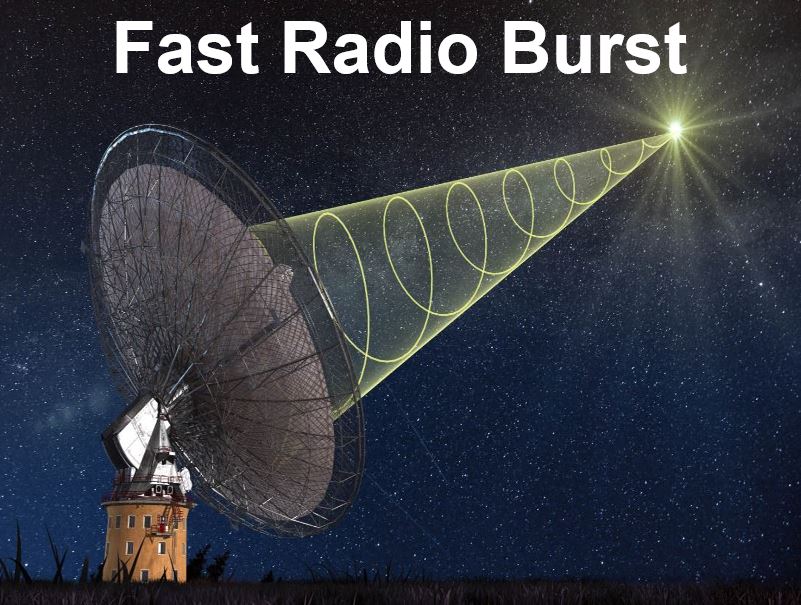Mysterious radio bursts from deep space are sent in such dispersion measures that they are unlikely to have come from something natural, scientists say, indicating that they may have come from intelligent aliens.
Professor of Physics at the University of Hawaii, John Learned said of the FRBs (Fast Radio Bursts) “If the pattern is real. It is very, very hard to explain.”
Radio telescopes have picked up FRBs for the first time since 2001. An FRB is a very short radio burst from deep space lasting just a few milliseconds.

An artist’s depiction of CSIRO’s Parkes radio telescope receiving the polarised signal from the new ‘fast radio burst’. (Image: csiro.au)
Scientists don’t know where these radio bursts come from, most are fairly certain they come from billions of light years from Earth. However, some have not discounted the possibility that the source could be a lot closer to home.
FRBs are extremely powerful bursts – even though they last just a small fraction of a second, they erupt with more energy than the Sun releases in 24 hours.
A repeating pattern that follows no laws of physics
Astrophysicists cannot understand why the FRBs are repeated in a pattern of numbers that appear to follow no laws of physics that we know of – unless they were emitted by an intelligent being.
In November 2014, the CRISO Parkes Radio Telescope in New South Wales, Australia, captured a ‘live’ FRB. Scientists had detected previous ones, but only weeks or months after their equipment had picked them up.
Prof. Learned, along with Wilfried F. Domainko of the Max Planck Institutes, and Michael Hippke of the Institute for Data Analysis in Neukirchen-Vluyn, both in Germany, said that the FRB signals have dispersion measures in multiples of exactly 187.5.
This means that the signals are coming from sources several billion light years from us at distances which are exactly spaced multiples of each other.
The authors add, however, that the signals could be coming from a much closer source.
The scientific community speculates that FRBs could come from black holes or distant stars. Their patterns also point to an intelligent being creating them.
Domainko, Learned, and Hippke wrote:
“We find that FRBs tend to arrive at close to the full integer second, like man-made perytons. If this holds, FRBs would also be man-made. This can be verified, or refuted, with new FRBs to be detected.”
Finding where FRBs come from
Emily Petroff, a doctoral student at Swindurne University of Technology in Melbourne, Australia, who saw the ‘live’ FRB in November last year, said:
“These bursts were generally discovered weeks, months or even more than a decade after they happened. We are the first to catch one in real time.”
Ms. Petroff said one of the big enigmas about FRBs is their distance. Most scientists estimate they originated 5.5 billion light years from Earth.
Ms. Petroff is fairly sure we will eventually pinpoint their origins. “We’ve set the trap. Now we just have to wait for another burst to fall into it.”
Reference: “Discrete steps in dispersion measures of Fast Radio Bursts,” Michael Hippke, Wilfried F. Domainko, John G. Learned. arXiv:1503.05245 [astro-ph.HE].
Video – Cosmic radio burst caught red handed
This British Astronomical Society video depicts astronomers using CSIRO’s 64-m Parkes radio telescope for the first time capturing a ‘fast radio burst’ ‘live’.

